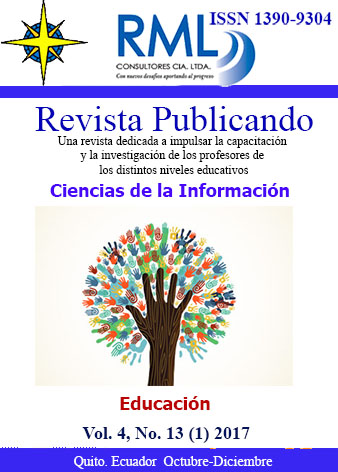Resumen
The historical aspects of formation and development of training in Tatar in foreign-language audience are considered. Article relies on the principles and provisions which are contained in works of such famous scientists-methodologists as S. Halfin, I. Giganov, A. Troyansky, M. H. Kurbangaleev, G. Ibragimov, L. Z. Shakirova, F. F. Harisov, R. R. Zamaletdinov, etc. The main objective of a technique of teaching Tatar in polycultural space is development of the evidence-based theory of training in Tatar in foreign-language audience. In this regard this science relies on achievements of pedagogics, psychology, a technique of teaching foreign languages, and also Russian as foreign, develops system of training in Tatar for Russian-speaking students. Besides, the new principles (didactic, methodical, linguistic and psychological) and methods of training in Tatar are discussed now (Shakirova G.R. et. al., 2016), some aspects of its assimilation, grammar and its place in system of training, types of speech activity in foreign-language audience, the theory and practice of training in Tatar of foreign students (Abdrakhmanova A.A. et.al, 2016). Proceeding from the above-mentioned, the researches considering formation and development of a technique of training in Tatar in historical and methodical aspects are of huge value.
Referencias
Abdrakhmanova A.A., Galiullina G.R., Aidarova S.H., Giniyatullina L.M., Gainullina G.F. Aspects of Tatar ethnic oriented teaching as a foreign language//Modern Journal of Language Teaching Methods. SpecialIssue (December 2016). ISSN: 2251-6204. - Pp. 181-184.
Ashrapova A.H., Yusupova A.S. Language and national identity in linguistic dictionaries (on material of bilingual dictionary of the Tatar language of the 19th century and the turn of the 20th century) <https://elibrary.ru/item.asp? id=23989532>//Journal of Language and Literature <https://elibrary.ru/contents.asp? issueid=1419238>. - 2015. - Vol. 6. No 1 <https://elibrary.ru/contents.asp? issueid=1419238&selid=23989532>. - Pp. 318-321.
Husnutdinov D.H., Yusupova Z.F., Shakurova M.M., Yusupov A. F., Mirzagitov R.H. Practical aspect of comparative research on the material of the Russian and Tatar Languages: XIX-XXI centuries//Journal of Language and Literature, 2016. - Vol.7. No. 2. - Pr. 191-194.
Kharisov F.F., Kharisova C.M. Bilingualism and multilingualism in a globalized society//Life Science Journal. 2014. Tom: 11. Release: SPEC. ISSUE 11. - SS. 439-443.
Nurmukhametova R.S., Zamaletdinov R.R., Sattarova M.R. The vocabulary of Tatar literary language (first half of the XX century) <https://scholar.google.ru/scholar? oi=bibs&cluster=10987322958601668621&btnI=1&hl=ru>//Life Science Journal. - 2014. - No 11(10). - Pp. 670-673
Shakirova G.R., Kharisova Ch.M., Kharisov F.F. The development of language competence of students in the study of native language morphology//Journal of Language and Literature, ISSN:2078-0303, Vol. 7. No. 1.February, 2016. - Pp. 227-230.
Shakurova M. M. Tatars telen to a metodikasyna ukytu mirasy (XVIII gasyr akhyra - XX gasyr). - Cauldron: Ikhlas, 2012. - 144. Б: 15.
Rakhimova D.I, Yusupova Z.F., Language training of labor migrants: Methodical recommendations for teachers//Journal of Language and Literature. - 2016. - Vol.7, Is.3. - Pr.314-317.
Yusupov R. A., Aydarova S. H., Sagdieva R. To., Harisova, G. F. Improving efficiency of teaching the Tatar language to a foreign audience//International Education Studies. 2015. No. 8 (5). River 158-164.
Zagidullina of F. From history of teaching the Tatar literature at pre-October school//National education at Tatars during the pre-October period. - Kazan, 1992. - C: 109.
Usted es libre de:
Compartir — copiar y redistribuir el material en cualquier medio o formato
Adaptar — remezclar, transformar y construir a partir del material
La licenciante no puede revocar estas libertades en tanto usted siga los términos de la licencia
Bajo los siguientes términos:
Atribución — Usted debe dar crédito de manera adecuada, brindar un enlace a la licencia, e indicar si se han realizado cambios. Puede hacerlo en cualquier forma razonable, pero no de forma tal que sugiera que usted o su uso tienen el apoyo de la licenciante.
NoComercial — Usted no puede hacer uso del material con propósitos comerciales.
CompartirIgual — Si remezcla, transforma o crea a partir del material, debe distribuir su contribución bajo la lamisma licencia del original.
